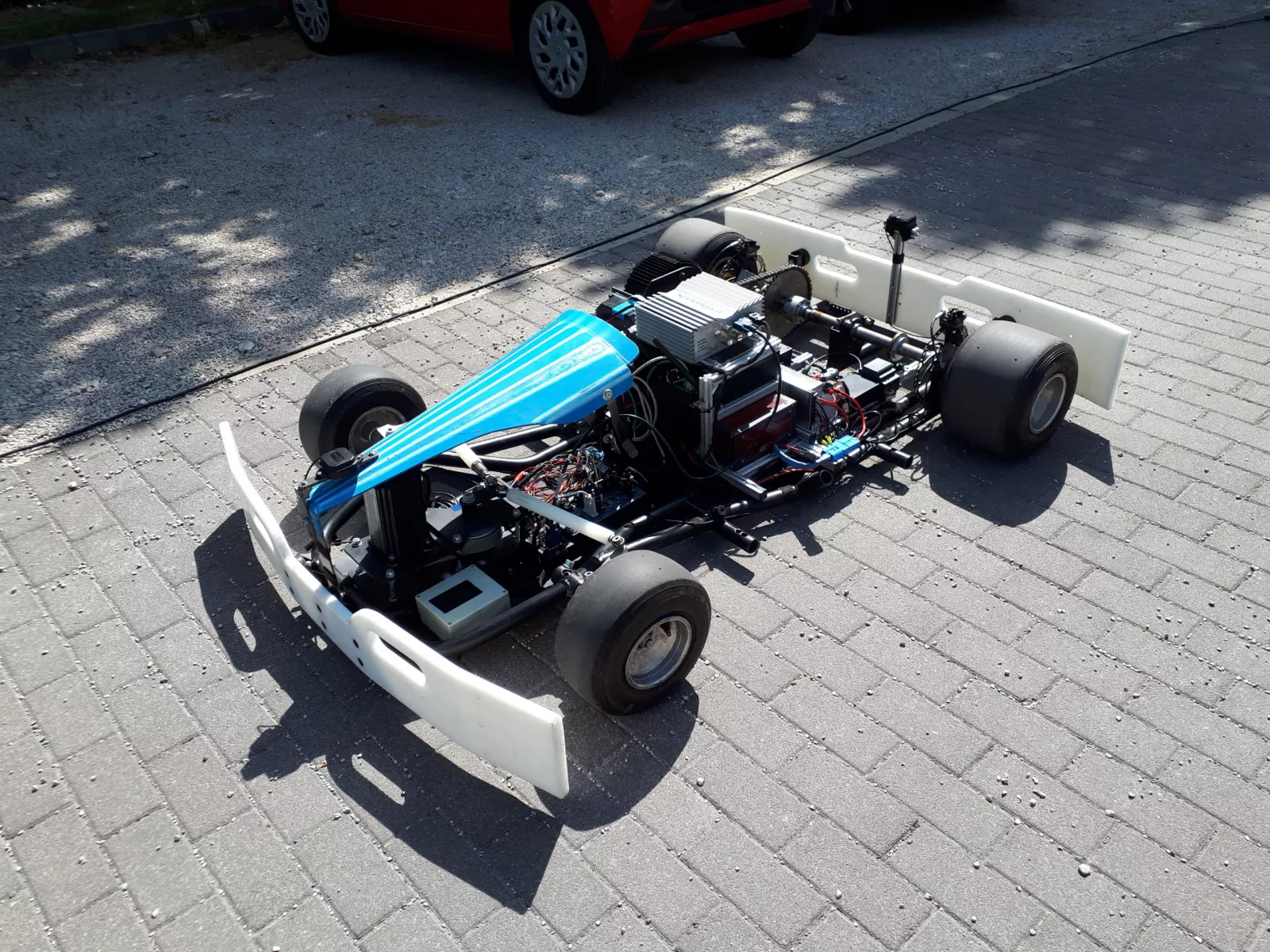
The staff and scholarship students of the Department of Transport and Vehicle Control of the Budapest University of Technology and Economics (BME) successfully carried out a demonstration on the BME campus entitled “Wireless communication of self-driving go-karts and traffic control equipment” within the National Laboratory of Autonomous Systems. The aim of the demonstration was to present the methods that can be applied in traffic control in the smart cities of the future.
The demonstration was attended by a self-driving go-cart developed at the department and the PLC-controlled traffic lights of the department’s traffic control laboratory. The go-cart communicates wirelessly with a central computer that also controls an traffic light. In addition, a digital copy of the scripts created in 3D runs in real time on computer.
In the first demonstrated scenario, the adaptive indicator light detects the proximity of the self-driving vehicle and switches to another program accordingly. Such an adaptive traffic light, for example at night, when the traffic lights are flashing yellow, can increase traffic safety. The purpose of the second and third scenarios is to present a digital copy of the traffic control equipment. In one case, the traffic light operates in normal mode, while in the next it flashes yellow to simulate a fault. However, as a redundancy, despite the signal image error, the device is still able to send its correct states to the vehicle wirelessly (via V2I communication). This case was also demonstrated in a simulation environment using a high-precision 3D model of the campus. In the fourth demonstrated scenario, a leadership support system is presented. The traffic control device transmits a recommended speed for the approaching vehicle. If the recommended optimum speed is observed, the vehicle can pass through road junction with traffic light without stopping.